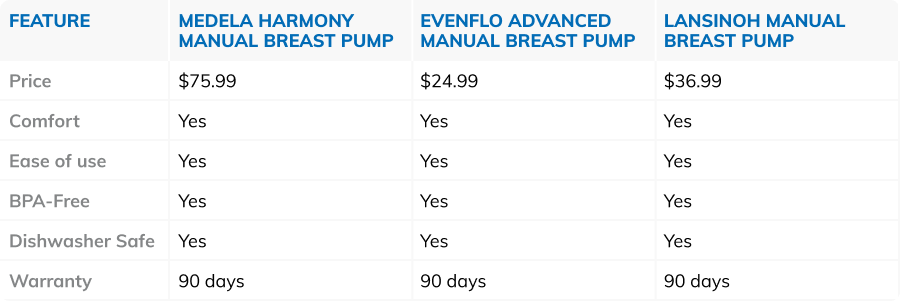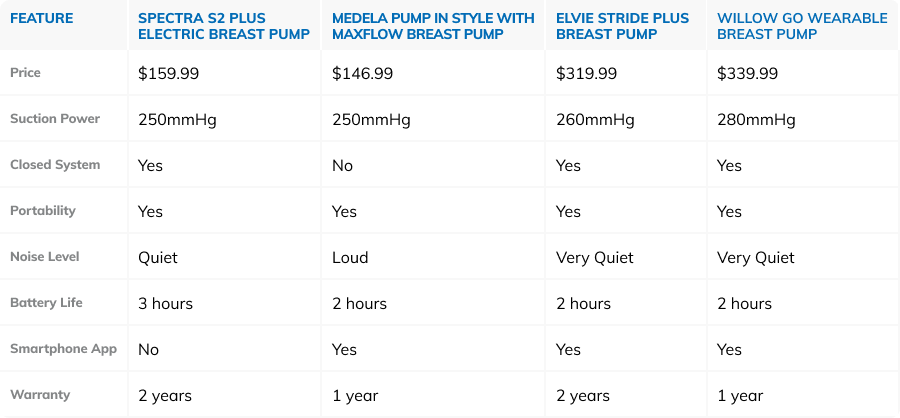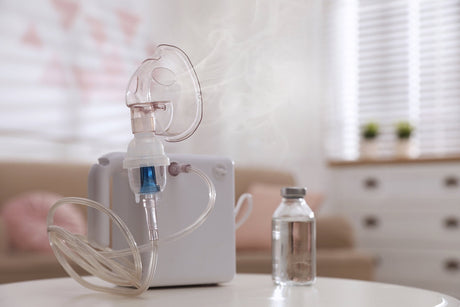Breast pumps are devices that allow nursing mothers to express milk from their breasts. They come in different types, sizes, and functionalities. Breast pumps are essential tools for nursing mothers who want to continue breastfeeding their babies even when they are away from them. In this article, we will discuss the different types of breast pumps, how to choose the best one, and how to use them effectively.
Understanding Breast Pumps
Breastfeeding is a natural process that provides the best nutrition for babies. However, it can be challenging for working mothers who have to be away from their babies for extended periods. Breast pumps allow nursing mothers to express milk from their breasts and store it for later use. This way, they can continue to provide their babies with breast milk even when they are not physically present.
Types of Breast Pumps
There are three main types of breast pumps: manual, electric, and hospital-grade pumps. Each type has its pros and cons, and the choice of pump depends on the mother’s lifestyle, frequency of use, and budget.
Manual Breast Pumps: Pros and Cons
Manual breast pumps are simple devices that require the mother to use her hand to create suction. They are affordable, portable, and easy to use. However, they can be tiring to use, and the suction power is limited. Manual pumps are best suited for mothers who need to express milk occasionally or have a low milk supply.
Here’s a guide to help you find the best manual breast pump.

All three manual breast pumps are affordable and easy to use. They are also BPA-free and dishwasher-safe. The Medela Harmony Manual Breast Pump is the most expensive option but is also the most comfortable to use. It has a soft-touch ergonomic handle and a 2-phase expression technology that mimics a baby’s natural nursing rhythm.
The Evenflo Advanced Manual Breast Pump is the most affordable option and has a unique ergonomic handle that reduces hand fatigue.
The Lansinoh Manual Breast Pump is also comfortable to use and has an adjustable suction level for maximum efficiency.
Electric Breast Pumps: Features and Benefits
Electric breast pumps are more expensive than manual pumps, but they are also more efficient. They use an electric motor to create suction, which makes the pumping process faster and less tiring. Electric pumps come in different sizes and functionalities, and some models are even portable. They are best suited for mothers who need to express milk frequently or have a high milk supply.
Here’s a helpful comparison table to help you find the best portable breast pump

The Spectra S2 Plus Electric Breast Pump is the most affordable option and has a closed system to prevent milk from entering the tubing. It is also portable and has a quiet motor.
The Medela Pump In Style with MaxFlow Breast Pump has a powerful motor and comes with a rechargeable battery pack. It also has a smartphone app that tracks pumping sessions.
The Elvie Stride Plus Electric Breast Pump is the most expensive option but is also the most discreet. It is a wearable pump that fits inside a nursing bra and is very quiet. It also has a smartphone app that tracks pumping sessions.
The Willow Go Wearable Double Electric Breast Pump is a bit more expensive than the other three options because of its wearable portability, but it is also the most discreet. This wearable pump fits inside a nursing bra and is very quiet, ideal for moms on the go with hospital-grade suction. It also has a smartphone app that tracks pumping sessions.
Hospital Grade Pumps: When to Choose Them
Hospital-grade pumps are the most powerful and efficient breast pumps available. They are designed for mothers who need to express milk frequently or have difficulty breastfeeding. Hospital-grade pumps are expensive, but they are also the most durable and long-lasting. They are best suited for mothers who need to express milk frequently or have a medical condition that affects breastfeeding.
How to Choose the Best Breast Pump For You
Choosing the best breast pump depends on several factors, including the mother’s lifestyle, frequency of use, and budget. It is essential to choose a breast pump that is comfortable, efficient, and easy to use. Some of the factors to consider when choosing a breast pump include:
- Lifestyle: If the mother is always on the go, a portable breast pump is the best option.
- Frequency of use: If the mother needs to express milk frequently, an electric breast pump is more efficient.
- Comfort and efficiency: The breast pump should be comfortable to use and efficient in expressing milk.
- Brand reviews and comparisons: It is essential to read reviews and compare different brands before making a purchase.
Using an Electric Breast Pump Effectively
Using a breast pump effectively requires some practice and patience. Here is a step-by-step guide to using a breast pump:
- Wash your hands thoroughly before you handle the breast pump.
- Choose a comfortable and quiet place to pump.
- Position the breast shield over your nipple and areola.
- Turn on the breast pump and adjust the suction level to your comfort.
- Pump for 15-20 minutes or until your breasts feel empty.
- Turn off the breast pump and remove the breast shield.
- Store the expressed milk in a clean container.
Breast Pump Cleaning and Maintenance Tips
It is essential to clean and maintain the breast pump regularly to ensure its longevity and hygiene. Here are some cleaning and maintenance tips:
- Wash the breast pump parts with warm soapy water after each use.
- Sterilize the breast pump parts once a day.
- Replace the breast pump parts every three months or as recommended by the manufacturer.
Common Breast Pump Issues
Breast pumping can be challenging, and nursing mothers may encounter some issues along the way. Here are some common issues and troubleshooting tips:
- Low milk supply: Try pumping more frequently or for longer periods.
- Sore nipples: Adjust the suction level or use a breast shield with a larger diameter.
- Clogged milk ducts: Massage your breasts before and during pumping to prevent clogging.
Health and Safety Considerations For Mothers Who Pump
Breast pumping is generally safe and healthy for both the mother and the baby. However, there are some health and safety considerations to keep in mind:
- Ensuring hygiene and safety while pumping: It is essential to wash your hands and clean the breast pump parts regularly to prevent infection.
- Breast health and pump usage: Breast pumping should not cause pain or discomfort. If you experience any pain or discomfort, stop pumping and consult your doctor.
- Breast pump accessories: Using the right breast pump accessories can make the pumping process more efficient and comfortable.
- Breast shields: Breast shields come in different sizes and shapes, and it is essential to choose the right size for maximum comfort and efficiency. Some breast pumps come with different sizes of breast shields, while others require you to purchase them separately.
- Milk storage bags: Milk storage bags are disposable bags that can be used to store expressed milk in the refrigerator or freezer. They are convenient and easy to use, and most brands are compatible with most breast pumps.
- Nipple cream: Nipple cream can help soothe sore and cracked nipples caused by breastfeeding or pumping. It is essential to choose a nipple cream that is safe for both the mother and the baby.
- Hands-free pumping bra: A hands-free pumping bra allows you to pump hands-free, which makes the pumping process more comfortable and efficient. It is essential to choose a pumping bra that fits well and provides adequate support.
- Breast pump cleaning kit: A breast pump cleaning kit contains all the necessary tools for cleaning and maintaining your breast pump. It is essential to clean and maintain your breast pump regularly to ensure its longevity and hygiene.
How To Store Expressed Milk
Storing expressed milk is an essential part of breastfeeding. Here are some storage solutions for expressed milk:
- Milk storage bags: These are disposable bags that can be used to store expressed milk in the refrigerator or freezer.
- Breast milk storage containers: These are reusable containers that can be used to store expressed milk in the refrigerator or freezer.
- Ice cube trays: These can be used to freeze small portions of expressed milk for later use.
It is essential to label the milk with the date and time of expression and use the oldest milk first.
Balancing Work and Breastfeeding
Balancing work and breastfeeding can be challenging, but it is possible.
Here are some tips for pumping at work:
- Find a private and comfortable place to pump.
- Talk to your employer about your pumping needs.
- Invest in a good quality breast pump.
- Store your expressed milk in a cooler bag with ice packs.
- Pump frequently to maintain your milk supply.
It is also essential to know your legal rights and workplace policies regarding breastfeeding. In many countries, employers are required by law to provide nursing mothers with a private and comfortable place to pump.
Find the Best Breast Pump For You
Breast pumps are essential tools for nursing mothers who want to continue breastfeeding their babies even when they are away from them. Choosing the best breast pump depends on several factors, including the mother’s lifestyle, frequency of use, and budget. It is essential to use the breast pump effectively, clean and maintain it regularly, and ensure hygiene and safety while pumping. With the right breast pump and accessories, nursing mothers can continue to provide their babies with breast milk even when they are not physically present.
FAQs
What breast pump has the most suction?
According to a comparison of 22 breast pumps conducted by New Little Life, the breast pump with the highest suction is the Willow. However, it’s important to note that maximum suction does not always mean the best suction 1.
What is the best breast pump for working moms 2023?
The top-recommended breast pumps for working moms are the Spectra S1 Plus Hospital Strength Breast Pump and the Medela Pump In Style with MaxFlow Breast Pump.
What breast pumps do hospitals recommend?
The best hospital-grade breast pumps recommended by hospitals are the Spectra S1 Double Electric Hospital-Grade Breast Pump and the Medela Symphony Double Electric Breast Pump 23.
What is better Elvie or Willow?
Both the Elvie and Willow are excellent options and comparable in many ways. The main differences between the two are: Willow has a no-spill technology, whereas Elvie is not entirely spill-proof. Willow is a bit noisier, whereas Elvie is very quiet. Willow milk bags can hold up to 4 ounces of milk at the same time, whereas Elvie has a slightly larger capacity of 5 ounces 4.
As a leading supplier of durable and home medical equipment (DME and HME), ApriaHome sources and distributes a wide range of treatment solutions, including maternity supplies and breastfeeding solutions.
We're here to support you as you work toward your improved health and well-being. We strive to meet your ever-evolving healthcare requirements with individualized attention and premium quality treatment solutions.
Looking to add maternity supplies? Browse our premium solutions and let us help you get the most out of every day.
Looking for advice? Our helpful agents are on call at (800) 780-1508 between 8:00 am - 10:00 pm EST daily. Get in touch today.





